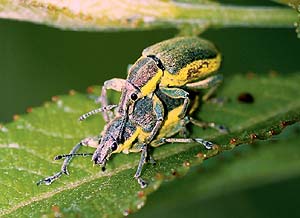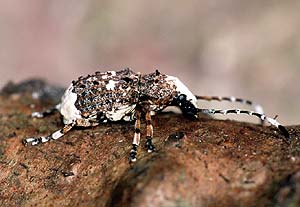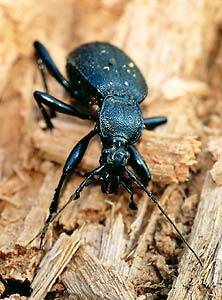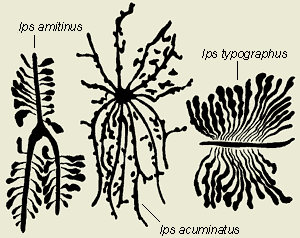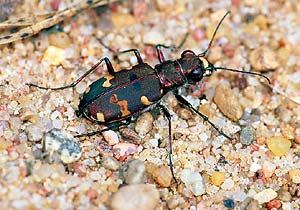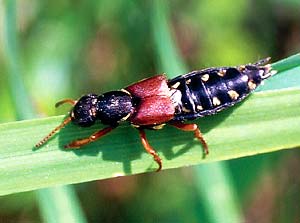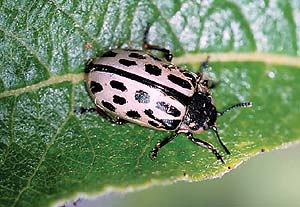|
TERRESTRIAL INSECTS
|
||||||||||||||||
Text:
|
Beetles
Beetles represent the richest species group on our planet – every 3rd to 4th animal species is a beetle species. About 350 000 beetle species have been described so far, yet specialists claim that in certain parts of the world another thousand species still wait to be discovered. Poland has about 6 700 beetle species, with around 250 already recorded in the Wigry National Park.
Beetles appeared on the earth about 270 million years ago, in the Carboniferous period of the Permian. We find them in almost every habitat, on land, in water and in the air. They can be found in soil, in water, on plants, under the bark, on plant and animal remains, in dung etc.
The second pair of wings in beetles is usually strongly sclerotized serving as a cover for the first pair of membranous wings. Beetles undergo a complete metamorphosis (involving the stage of an immobile pupa) with larvae differing markedly from adult insects. Some beetles, such as tiger beetles, have excellent sight owing to stemmata which accompany a pair of usual compound eyes. Others rely mainly on their sense of smell using chemoreceptors situated on the antennae. Some carabid beetles (Carabidae) are capable of recognizing the soil pH. Their smell organs involve small tufts of bristles located on the antennae and palps.
Beetles living in wood, such as longhorned beetles, bark beetles and house longhorned beetles, use highly sclerotized mandibles for boring in hard material. The canals cut in this way are species-specific. Many beetles representing this group of insects are considered dangerous tree pests.
Most beetles feed on plants or decaying organic matter; only a few are predators. Predacious insects include tiger beetles (Cicindelidae) and many carabid beetles (Carabidae). Wood tiger beetles (Cicindela silvatica) are often found on sandy roads on warm and sunny days. Both adult tiger beetles and their larvae are armed with sharp, sickle-shaped mandibles which they use for catching other insects. Tiger beetles seize the prey with their mandibles, pour their digestive juices secreted in the middle intestine, profusely over it and finally suck in the partly digested dead body of the prey. This is the so-called ”pre-oral digestion”.
Carrion beetles (Silphidae) include mainly species that feed on dead animals.
Burying beetles (Necrophorus vespillo), easily recognizable by their contrasting orange and black pigmentation, bury dead animals and use the carrion for depositing their eggs. Once hatched, the larvae devour the carrion, playing a sanitary role in nature.
Rove beetles (Staphylinidae) feed both on dead organic matter as well as on living insects and other invertebrates. They are characterized by shorter wing cases and an elongated, wiggly abdomen. One of the largest representatives of this family is Staphylinus cesareus.
The scarab family (Scarabaeidae) includes both the ordinary dor beetle (Geotrupes stercoriarius) and the bee beetle ( Trichius fasciatus) as well as the now rare rhinoceros beetle (Oryctes nasicornis), whose males carry an impressive ”horn” on their heads.
Some of the most popular beetles are ladybirds (Coccinellidae), characterized by a round, convex body covered with brightly patterned wing cases. When annoyed, ladybirds secrete a toxic substance. Most adult ladybirds and their larvae are predators. Chrysomelid beetles (Chrysomelidae), although similar to ladybirds, are solely herbivorous. Their wing cases are beautifully coloured, often with a metallic lustre.
|
|||||||||||||||
|
|
|
